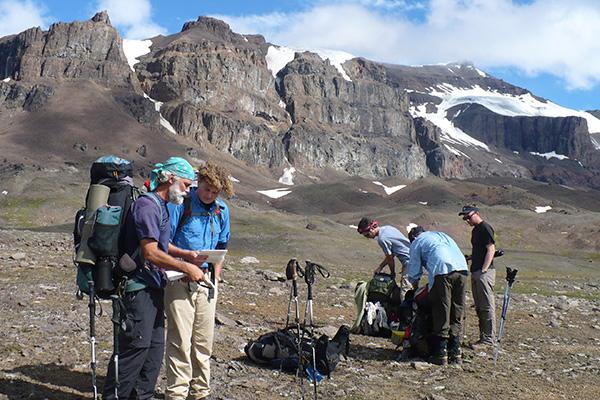When folks sign up for a trip we send out a detailed gear-list of what to bring and what is provided.
If you have done some backpacking in the past you might wonder if there is really any difference in the gear you need for an Alaska backpacking trip and what you might need for a similar trip in the lower forty eight. The short answer is that there are a few but mostly the same gear will work here. But there are a few things worth discussing because there are a few differences and besides who doesn’t love talking about gear!
Backpacks
Let’s start with one of the most important items - the backpack. The biggest mistake that I see with packs is not bringing a large enough ruck. You want something around 70 liters for men and a little less is okay for women. The amount of gear you need to carry for a week in Alaska is not much different than elsewhere with one exception.
If hiking in an Alaska national park you are required to carry your food in a bear resistant container. We use the Bear Vault, BV500. These containers are hard plastic so they don’t compress and that makes packing a bit less efficient. If you have a larger pack you might be able to pack the canister on its side but otherwise you have to go vertical and pack other stuff around it. Be sure to account for the food canister when selecting a pack.
When folks show up with a pack in the 55 liter range they can end up having to lash some gear on the outside. This is not ideal as items can fall off, especially when hiking through brush. So if in doubt, go bigger.
The pack cover is another item where bigger is better. Get one larger than you think you need. A fully loaded pack is often bulkier than expected and you want full coverage with the water-proof cover. Going a size larger then you think is not a bad idea. It is very common to see people with pack covers that just don't cover the whole load, even though it's the cover made for that particular pack. So go big.
Trekking Poles
Fortunately trekking poles have become much more widely used than they were say fifteen years ago. Poles are indispensable in the Alaskan backcountry where almost all travel is off-trail. On well maintained forest service trails poles might seem like an optional item. But go off-trail and they become a necessity. Poles not only help relieve pressure on joints but are a huge aid to balance on the rough and highly variable terrain found in the backcountry. You want poles that collapse for easy packing and have three sections. Other than that there are a lot of great poles out there and if you get poles that are rated at 4-5 stars you can’t go wrong.
Warm Layers
People sometimes skimp a bit on the warm layers to save weight and pack space. This is a mistake if you want to be comfortable.
Take a pair of thermals for wearing in camp and also for sleeping. It can get chilly in the mountains and when the sun dips behind the ridge the temps can take an immediate nose-dive. I usually wear my thermals under hiking pants in camp and possibly rain pants over that. Your body really cools down when you stop hiking.
Upper body layers are also critical and you want two layers not just one. The primary should be a puffy jacket. Here are some examples: https://www.rei.com/search?q=puffy+jackets.
Just don’t go overboard and get a winter quality jacket.
For a second layer you should get a light to mid-weight fleece. You don’t need to go super heavy weight on this but something more than a micro fleece is best. Again, when things cool down in camp you may find yourself putting on all of your warm layers.
Boots
There has been a trend in the last ten years or so towards ever lighter weight hiking boots to the point where a lot of boots are little more than trail runners. Those can work on a nice trail but not so well off-trail in Alaska.
In the Alaska backcountry you will always be hiking on highly variable terrain, from tundra to glaciers, rock fields, moraine and more. You really want a stiffer boot for that kind of travel. If you can easily bend the toe of the boot fully backwards then your footwear does not have a strong enough sole. Such boots will leave your feet tired and sore at the end of the day. Try to find a boot with a full shank and ones that cover the ankle. Merrils are notoriously lame and offer very poor support.
So those are some of the most important gear considerations and areas where I see the most problems. When you sign up for a trip you will receive a detailed gear list that outlines what you need to bring with recommendations.




